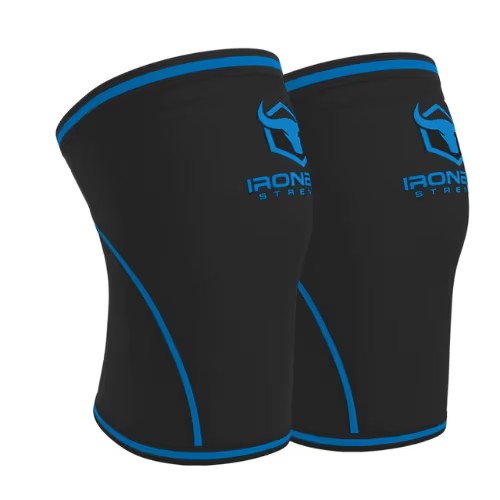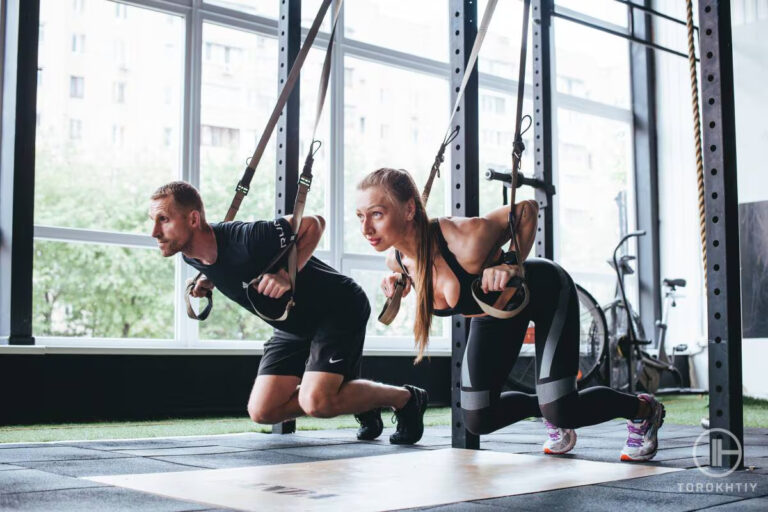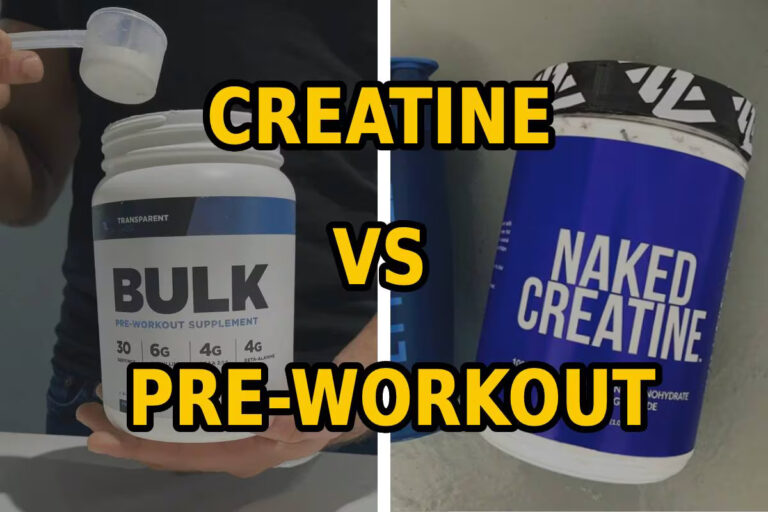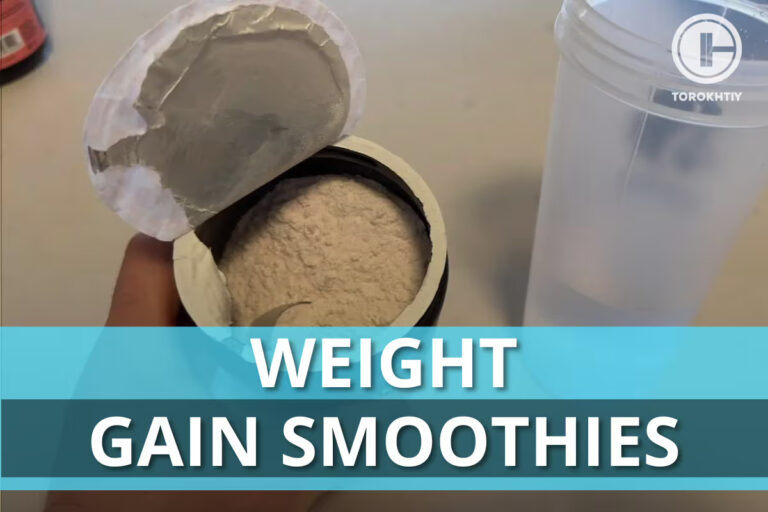Knee Pain from Lifting — Types, Causes, and Treatments
Lifting is an excellent way to improve your overall health and fitness, with increases in muscular strength, cardiovascular system, and mental health as just a few of the proven benefits.
Even an activity with benefits involves risks, with knee pain from lifting a commonly reported issue with people that perform consistent strength training, like powerlifting. Below, I’ll help you to minimize the risk of knee pain and injuries, choose the right lifting accessories, and learn about the treatment options available to you.
Lifting weights is generally safe for your knees, but care needs to be taken to ensure you’re lifting correctly and safely. Especially, in the sport of powerlifting where there is a high incidence of knee pain and injuries due to the amount of weight and overuse the sport requires.
So what is powerlifting? In powerlifting, athletes compete to lift the most weight for one rep in the squat, bench press, and deadlift. Powerlifting knee pain may result from an incorrect warm-up, wrong technique, a badly organized training plan, or lack of strength in the surrounding muscles.
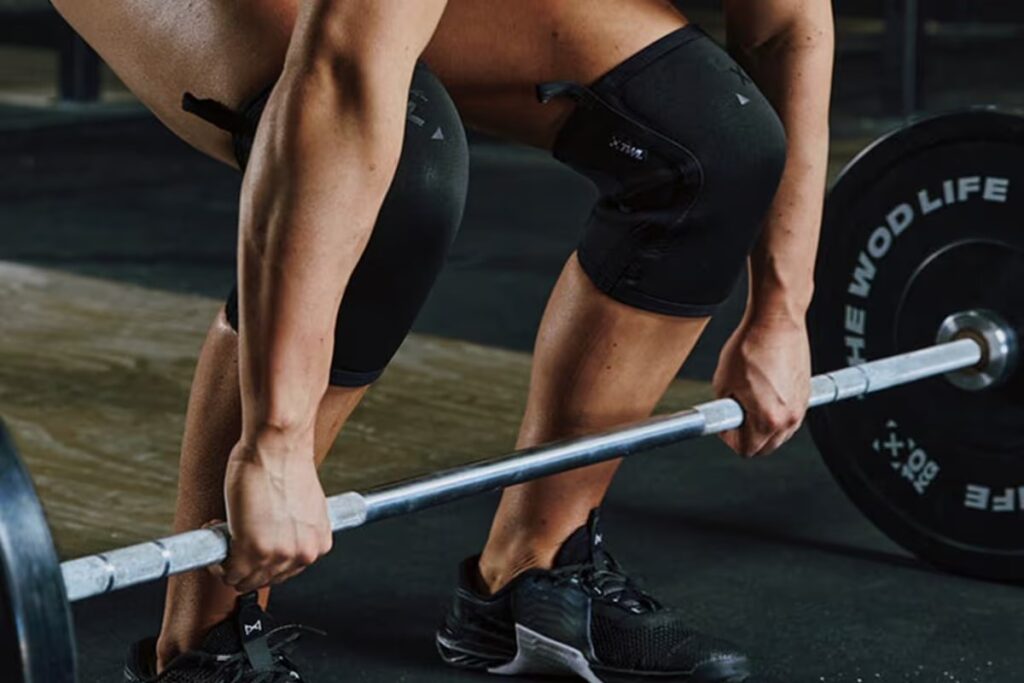
Intro to Knee Pain from Lifting
Lifting weights is a common way to cause knee injuries, with exercises such as deadlifts and squats placing high amounts of force on the knee joint.
Our knees are designed to cope with the vertical forces produced during these movements. However, moving horizontally or rotationally can start to cause knee issues.
This doesn’t just apply to these two lifts, with general lifting movements applying extra pressure and leading to pain or injury if performed incorrectly. Due to this, it’s really important to improve your mobility, stability, and perform appropriate warm-ups. Also, it’s highly important to focus on the correct lifting technique, minimize overtraining, and use the proper accessories and equipment necessary.
Different Types of Knee Pain during Lifting
Weightlifting knee injuries can cause pain and swelling, which affects your training and workouts. Here are the different types of medical knee conditions that you might be experiencing:
1. Osteoarthritis
Knee osteoarthritis is what medical doctors refer to as “wear and tear” in our body. This is caused by the breakdown of cartilage in our joints. It’s one of the most common causes of knee pain within lifters.
Osteoarthritis may be accelerated by previous knee injuries and overuse when lifting. Symptoms include swelling, stiffness, and limited range of motion. You may hear a slight clicking noise when moving and weakness.
The best approach to prevent knee pain due to osteoarthritis is to find a balance between training and life chores and requirements. Remember, Inactivity is never a good idea and for the most part it will increase the risk of pain and atrophy of the surrounding muscle in the knee joint.
2. Bursitis
Around your knee joints, there are fluid-filled sacs called Bursa. They provide protective cushioning around the joint structure and prevent bone-to-bone friction. If a bursa becomes swollen and inflamed, it may lead to pain at the front of your knee called knee Bursitis. Changes in activity level, overuse, and repeated pressure may be possible causes.
3. Strains and Sprains
Strains are known as pulled muscles, usually caused by a forceful pull on the tendon to muscle junction. Common causes include overuse, poor lifting technique, inappropriate warm-up, poor muscle flexibility, and fatigue. Sprains are ligament injuries that may result from a tear or excessive stretching between the ligament and the bone attachment.
Strains and sprains could be caused by unnatural twisting of the knee joint and overloading which increases fatigue in the muscle. Symptoms include swelling, pain, stiffness, and sometimes bruising.
4. Iliotibial Band Syndrome
If you feel pain in the outer part of your knee, it might be Iliotibial Band Syndrome. The Iliotibial band runs along the outside of your leg. The pain is possibly due to the IT band becoming irritated because of structural and movement problems and swelling or inflammation. One of the main causes may be overtraining and overloading.
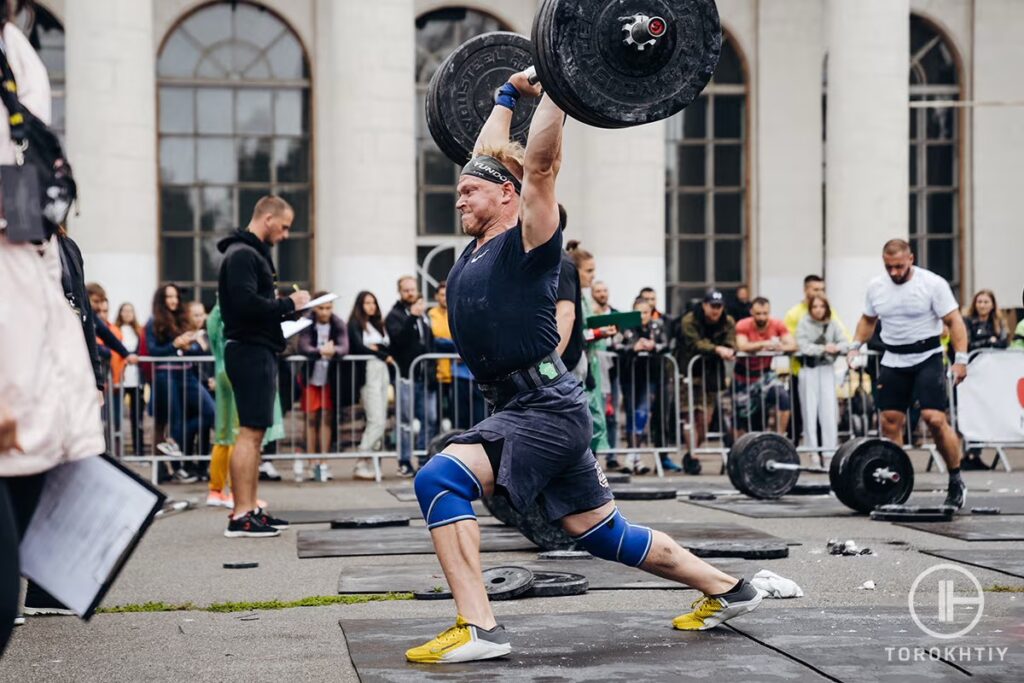
5. Ligament and Cartilage Damage
Ligaments are tissues that connect or interact with bone, with the anterior cruciate ligament (ACL) and medial collateral ligament (MCL) the most common structures to cause knee pain. The meniscus is also commonly injured.
The ACL runs through the middle of the knee and provides anterior stability. The MLC is located on the inner side of the knee and prevents medial deviation of the knee. The meniscus is located at the top of the Tibia and provides interaction and shock-absorbing effects between the femur and the tibia. Common symptoms of these knee structure injuries include a loud popping sound, swelling around the area, pain, and instability.
The most commonly reported injury concerns the ACL, resulting from an overextension of the knee joint by rapidly changing direction. An example of this injury with powerlifters is by overextending your knee when locking out a movement such as a squat, leg press, or deadlift.
Preventing Knee Pain During Lifting
Minimizing the risk of knee pain and injuries isn’t overly complicated and can be easy to do once it becomes part of your routine. These prevention strategies should be used at all levels of lifting.
1. Warm Up Correctly
Performing a correct warm-up before exercise is one of the best ways to minimize knee injuries. If you’ve been inactive most of the day before lifting, your muscles are a lot tighter than they would be after a warm-up.
Always start a lifting session with a good warm-up using a combination of lighter-weight exercises, dynamic stretches, and a small cardio-based activity such as cycling for five minutes.
2. Correct Technique
Using the correct technique when lifting is vital to ensure a pain-free experience. When your knee joint moves away from the optimal
position, the strain transfers from the surrounding quad and hamstring into the joint.
Make sure your form is correct during every lift. Practicing in front of a mirror is one way to check that you are doing everything correctly.
3. Periodize Training
Having a well-organized training plan is pivotal to lifting success. Periodizing training to prevent knee pain involves methodically increasing the weight at the correct intervals to not over-stress the knee joint.
If the weight is too big, your muscles struggle to support it, meaning the stress is transferred from the muscle to the joint, causing possible pain and increasing the risk of injury.
4. Strengthen the Surrounding Muscles
Strengthening the muscles around your knee joint will help to take some stress off as they can properly support your weight as you lift.
Maximize the strength development of your quadriceps and hamstrings muscles by performing exercises like Bulgarian split squats, front squats, and back squats. Correctly performed machine exercises like leg presses, knee extensions, and hamstring curls offer a great way to increase the strength of your muscles without placing too much strain on the knees.
5. Modifying Your Exercises or Have Rest Days
If you’re already suffering from constant knee pain, take some days off to calm the symptoms. If pain continues, seek a healthcare professional like a physical therapist for an evaluation.
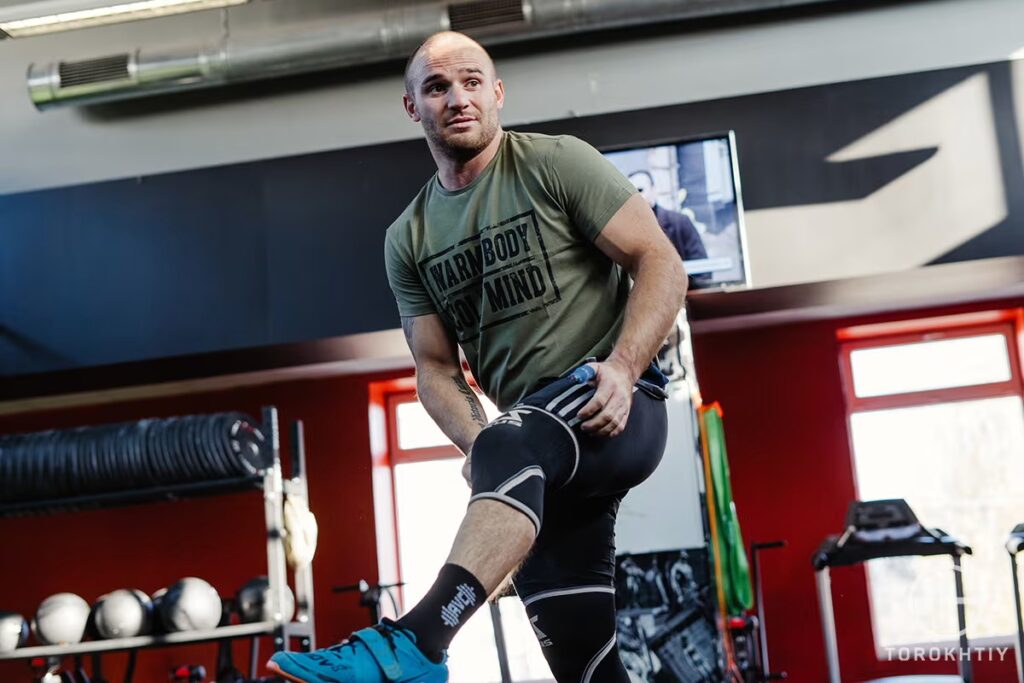
Choosing the Right Equipment and Accessories for Knee Health
Just because you’ve got knee pain doesn’t mean to say you need to stop lifting altogether, It’s just about making some smart lifting choices. Some lifting accessories also help by providing extra knee support when lifting.
1. Weight Machines
Weight machines use a fixed path to provide resistance, with built-in safety mechanisms and small weight increments. They provide a great way to train whilst reducing the stress placed on the knee joint and surrounding ligaments during normal lifting.
A wide variety of weight machines are available to choose from and depend on a mixture of your personal preference and current mobility. If you’re looking to strengthen the muscles around your knee joint, go with the leg press. If you’re able to squat without pain but want something less intense, try the hack squat. Leg extensions and leg curls provide excellent machine options to isolate your quads and hamstrings when performed correctly.
2. Knee Supports
Different knee support accessories include knee sleeves, knee braces, and knee wraps. All of these can be used successfully but for different purposes meaning their use is situation specific.
Knee sleeves pull up tightly around your knee to provide joint protection, muscle warmth, and added stability. They help to keep your knee joint in the optimal position, therefore reducing the chance of injury and associated pain.
Knee Braces provide more support but restrict movement meaning they are not suitable to be used for lifting or other activities. Restricting the joint movement may allow your knee to heal quicker and increase your overall mobility when experiencing knee pain or injury.
Knee wraps are predominantly used for powerlifting, to provide added support around the knee joint when lifting heavy weights. They are tightly wrapped around the knee to provide added compression.
Treatment for Knee Pain from Lifting
Treatment options for knee pain may include:
- Modify Your training (Modify the weight, reps, sets, or movement pattern)
- Rest (This is usually the most simple and effective way to allow your knee to heal if it’s not a major injury)
- Ice (Ice can be used to reduce swelling and inflammation, therefore reducing the associated pain)
- Support Accessories (Wearing a knee brace or sleeve can help to reduce pain by providing support around the injured joint)
- Pain Medicine (Taking over-the-counter pain relievers may help provide short-term relief)
- Rehabilitation Exercises (Regular stretching and strengthening exercises can help to increase knee joint strength and improve your overall mobility, reducing the chance of injury and pain)
- Knee Surgery (This is usually the last option when all other treatment options have failed)
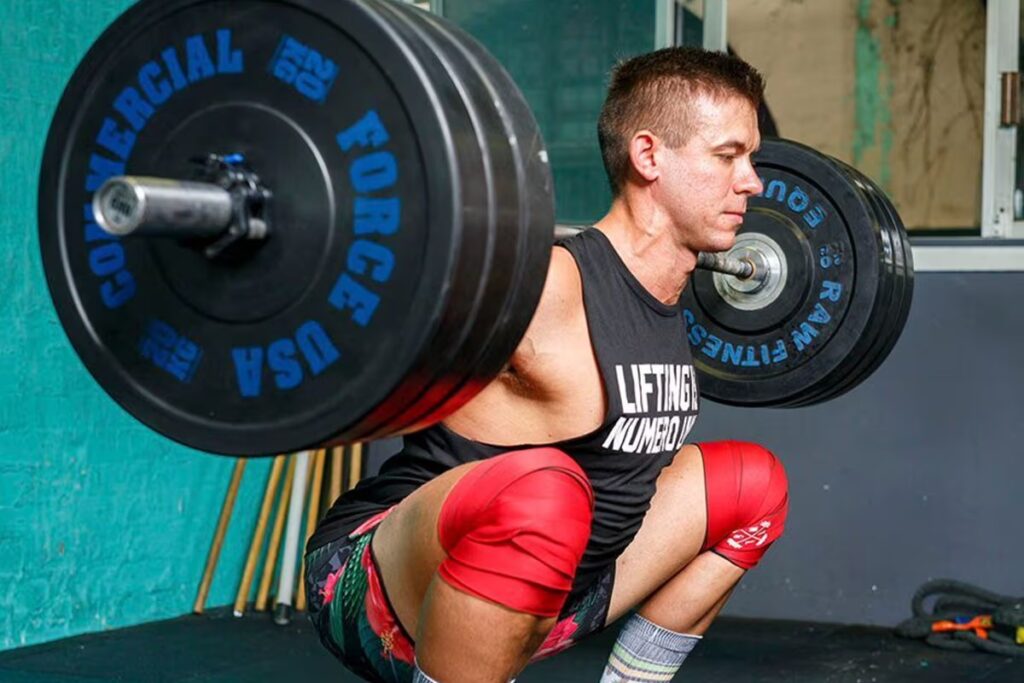
FAQ
Is Knee Pain after Lifting Normal?
Lifting is a great way to strengthen your muscles and bones when done correctly. Knee pain can be commonly caused by new lifting patterns, overtraining, and an incorrect warm-up procedure. Knee pain can be normal if you’re performing a new lift in the gym or at home.
Are Weightlifting Knee Injuries Common?
Due to the increased stress placed on the knee joint when weightlifting, knee injuries are more common than normal daily activity. Lifts that place the knee joint under more stress include squats, deadlifts, and lunges.
How to Minimize Knee Injuries or Pain from Lifting?
Common knee injuries when lifting can be prevented using several prevention strategies. These include appropriate warm-ups, decreasing overtraining, correct lifting progression, and strengthening the muscles around your knees.
Conclusion
Lifting is generally safe when performed correctly. Knee pain can be a common occurrence, with an incorrect warm-up, a badly organized training plan, poor technique, and wrong exercise selection being some of the possible causes.
To reduce knee pain, perform a structured warm-up before lifting, periodize your training, and use knee support accessories when needed. Treatment options include rest, applying ice, rehabilitation exercises, and surgery in severe cases.
Have you experienced knee pain before? What was it from? Tell me below and I’ll try to help you solve it!
Also read:
- Knee Pain When Squatting
- Pain in Knee When Lunging
- Knees Sore After Workout
- Knee Pain From Functional Fitness
- Knee Pain After Leg Press
- Knee Pain From Elliptical
- Best Powerlifting Shoes for Women
References:
- Strength training: Get stronger, leaner, healthier // Mayo Clinic: https://www.mayoclinic.org/healthy-lifestyle/fitness/in-depth/strength-training/art-20046670
- Injuries among weightlifters and powerlifters: a systematic review // British Journal of Sports Medicine: https://doi.org/10.1136/bjsports-2016-096037
- Muscle strains – Symptoms and causes // Mayo Clinic: https://www.mayoclinic.org/diseases-conditions/muscle-strains/symptoms-causes/syc-20450507
- Sprains – Symptoms and causes // Mayo Clinic: https://www.mayoclinic.org/diseases-conditions/sprains/symptoms-causes/syc-203779
- Take control of your knee pain // The President and Fellows of Harvard College: https://www.health.harvard.edu/pain/take-control-of-your-knee-pain
Why Trust Us?
With over 20 years in Olympic Weightlifting, our team does its best to provide the audience with ultimate support and meet the needs and requirements of advanced athletes and professional lifters, as well as people who strive to open new opportunities and develop their physical capabilities with us.
By trusting the recommendations of our certified experts in coaching, nutrition, dietology, and sports training programming, as well as scientific consultants, and physiotherapists, we provide you with thorough, well-considered, and scientifically proven content. All the information given in the articles concerning workout programming, separate exercises, and athletic performance, in general, is based on verified data. We ensure that you can rely on our professionals’ pieces of advice and recommendations that can be treated as personalized ones which will benefit you and fully meet your needs.
The product testing process is described in more detail here
Author: Ernesto Mendez
Orthopedic Clinical Specialist
Best Results: Snatch – 208 kg,
C&J – 240 kg
Dr. Ernesto Mendez is a licensed physical therapist, a board Orthopedic Clinical Specialist (OCS) and founder of Movement 4 Wellness Physical Therapy, LLC. He earned his degree from Thomas Jefferson University. He is also an Olympic weightlifting coach (USAW L1) and Functional Fitness Level 1 Trainer. His experience includes the areas of pain management, movement analysis, injury recovery, surgical rehab, corrective exercise, and athletic, military, and occupational performance. Dr Mendez is passionate about Olympic weightlifting and fitness. Ernesto Mendez is responsible for designing multiple training programs, writing blog articles, posting daily weightlifting content, doing live weightlifting and mobility seminars.

